Bosc pears are one of nature’s most elegant and delicious gifts — easily recognized by their long necks, golden-brown russeted skin, and uniquely honey-sweet flavor. Often called the “aristocrat of pears,” Bosc pears are beloved for their firm texture, rich taste, and ability to hold their shape in cooking. Whether you want to grow them in your backyard orchard or simply learn how to care for this classic variety, the Bosc Pear Tree is a rewarding addition to any garden.
In this guide inspired by NatureHills.com’s focus on quality fruit trees, we’ll explore everything you need to know about planting, growing, and enjoying Bosc pears — from choosing the right location to harvesting and storage tips.
What Makes the Bosc Pear Special?
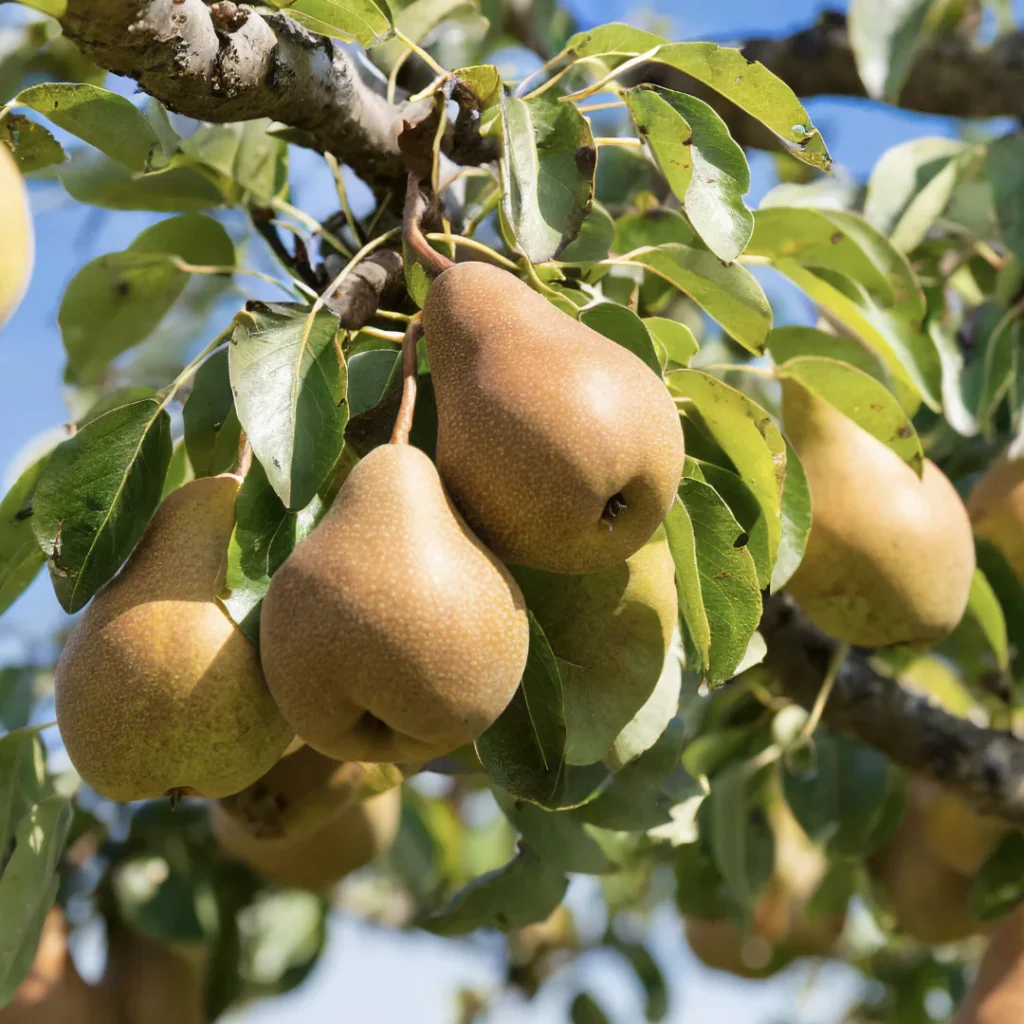
Bosc pears are a European variety (Pyrus communis) that originated in France or Belgium in the early 19th century. They quickly became a favorite in orchards across North America due to their excellent flavor, texture, and long storage life.
Unlike Bartlett pears, which are soft and juicy, Bosc pears have a dense, firm flesh that makes them ideal for both fresh eating and cooking. They hold up beautifully in baking, poaching, and grilling — making them the go-to choice for pear tarts, salads, and elegant desserts.
Key Characteristics of Bosc Pears:
- Shape: Long, slender neck and rounded base
- Skin: Golden-brown with a russet finish
- Flesh: White, firm, and aromatic
- Flavor: Sweet, spicy, and honey-like
- Ripening season: Mid to late autumn
Bosc pears continue to ripen after harvest, offering a perfect blend of crispness and sweetness when fully mature.
Ideal Growing Conditions for Bosc Pear Trees
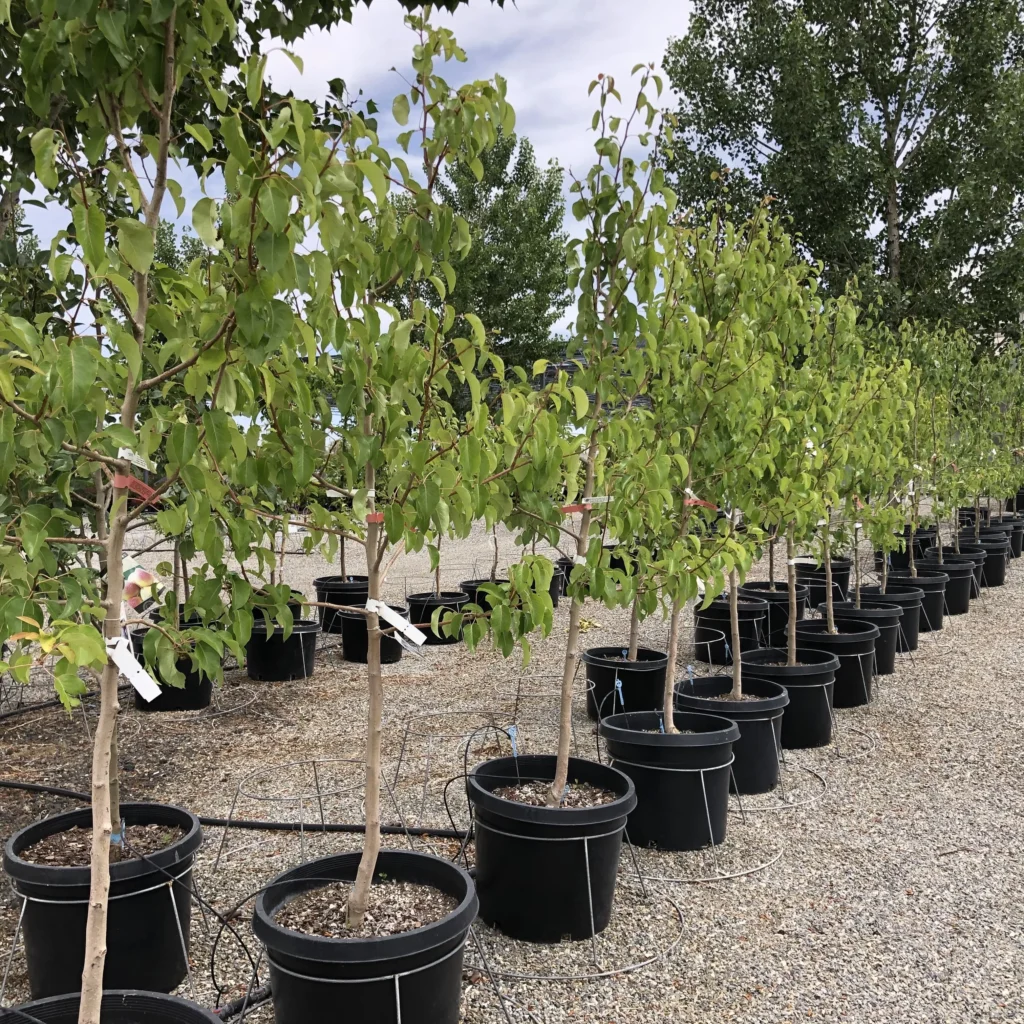
To grow Bosc pears successfully, start by creating the right environment. These trees thrive in temperate climates with cold winters and warm summers. While they’re hardy and adaptable, proper site selection ensures optimal fruit quality and yield.
1. Sunlight:
Bosc pears need at least 6–8 hours of full sunlight each day. Choose a spot that receives direct morning and afternoon light to promote strong growth and maximum fruiting.
2. Soil Requirements:
They prefer well-drained, loamy soil that’s slightly acidic to neutral (pH 6.0–7.0). Avoid waterlogged areas, as standing moisture can lead to root rot.
3. Spacing and Air Circulation:
Space trees about 15–20 feet apart to allow good airflow, which helps reduce disease pressure. Pear trees benefit from open space that allows light to reach all parts of the canopy.
4. Pollination Needs:
Bosc pears are not self-pollinating, meaning they need a compatible pollinator variety like Bartlett, Comice, or Anjou nearby to produce fruit. Plant your pollinator within 50 feet for best results.
How to Plant a Bosc Pear Tree
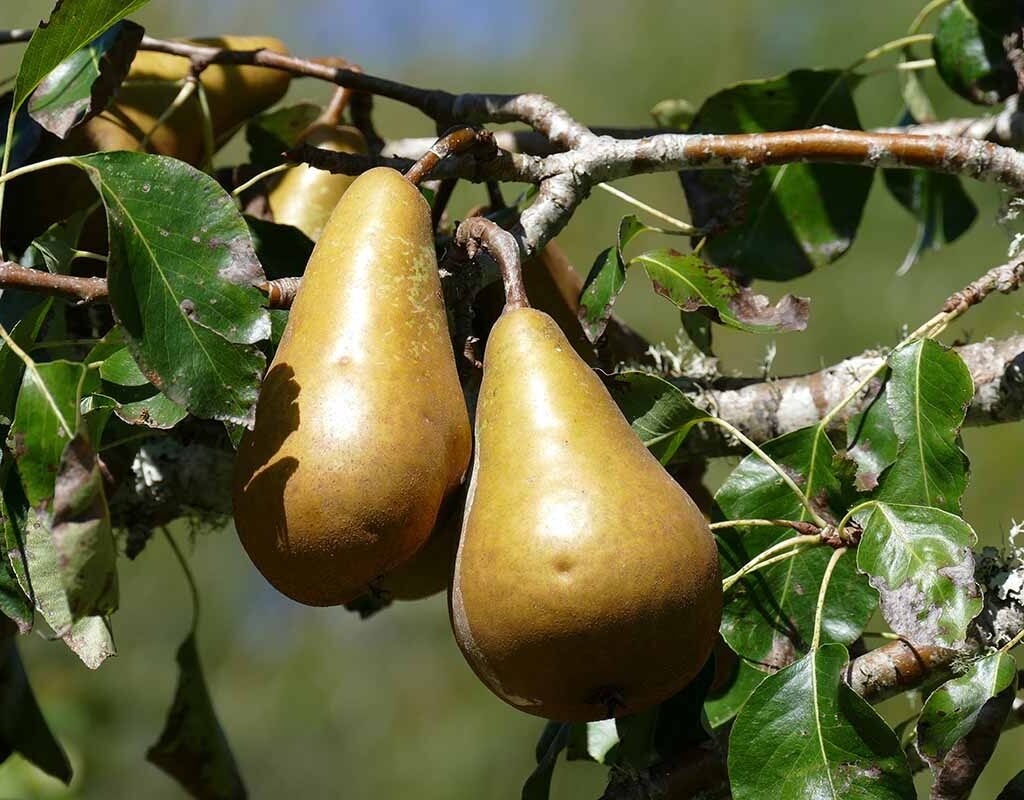
Planting Bosc pears is straightforward when you follow these key steps:
Step 1: Choose the Right Time
The best time to plant is early spring or late fall when the tree is dormant. This timing helps roots establish before the heat of summer or the freeze of winter.
Step 2: Prepare the Soil
Loosen the soil in a wide area, mix in compost or aged manure, and ensure the site drains well. Bosc pears dislike soggy roots, so raised beds or mounded soil can be helpful in heavy soils.
Step 3: Dig and Plant
- Dig a hole twice the width of the root ball and the same depth.
- Set the tree in the hole so that the graft union (the bump near the base of the trunk) is 2 inches above the soil line.
- Backfill with soil, gently tamping it down to remove air pockets.
- Water thoroughly after planting.
Step 4: Mulch and Support
Apply a 2–3 inch layer of mulch around the base to conserve moisture and prevent weeds. If needed, stake the young tree for support against strong winds.
Watering and Fertilizing Tips
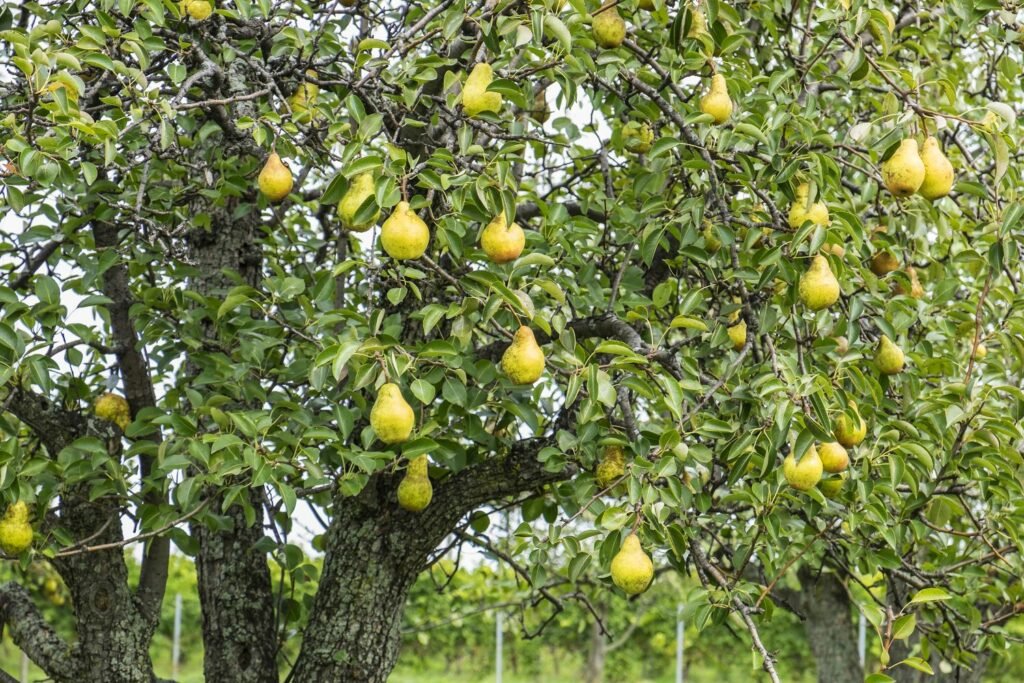
Proper watering and feeding are essential for healthy Bosc pear growth.
Watering:
Keep the soil evenly moist, especially during the first two years. Deep watering once a week is better than shallow daily watering. Once established, Bosc pears are moderately drought-tolerant.
Fertilizing:
In early spring, apply a balanced fertilizer (10-10-10) around the drip line. Avoid over-fertilizing — too much nitrogen encourages leaf growth instead of fruiting. Organic compost or aged manure once a year works wonderfully, too.
Pruning and Training Your Bosc Pear Tree
Pruning is vital to control the size, shape, and productivity of your pear tree.
When to Prune:
Prune in late winter or early spring while the tree is dormant.
How to Prune:
- Remove any dead, damaged, or diseased branches first.
- Cut out crossing branches to maintain an open, vase-shaped canopy.
- Thin out crowded areas to allow better light penetration.
- Keep a strong central leader (main trunk) for structure.
This practice not only improves fruit quality but also helps reduce disease problems by increasing airflow.
Bloom and Pollination Time
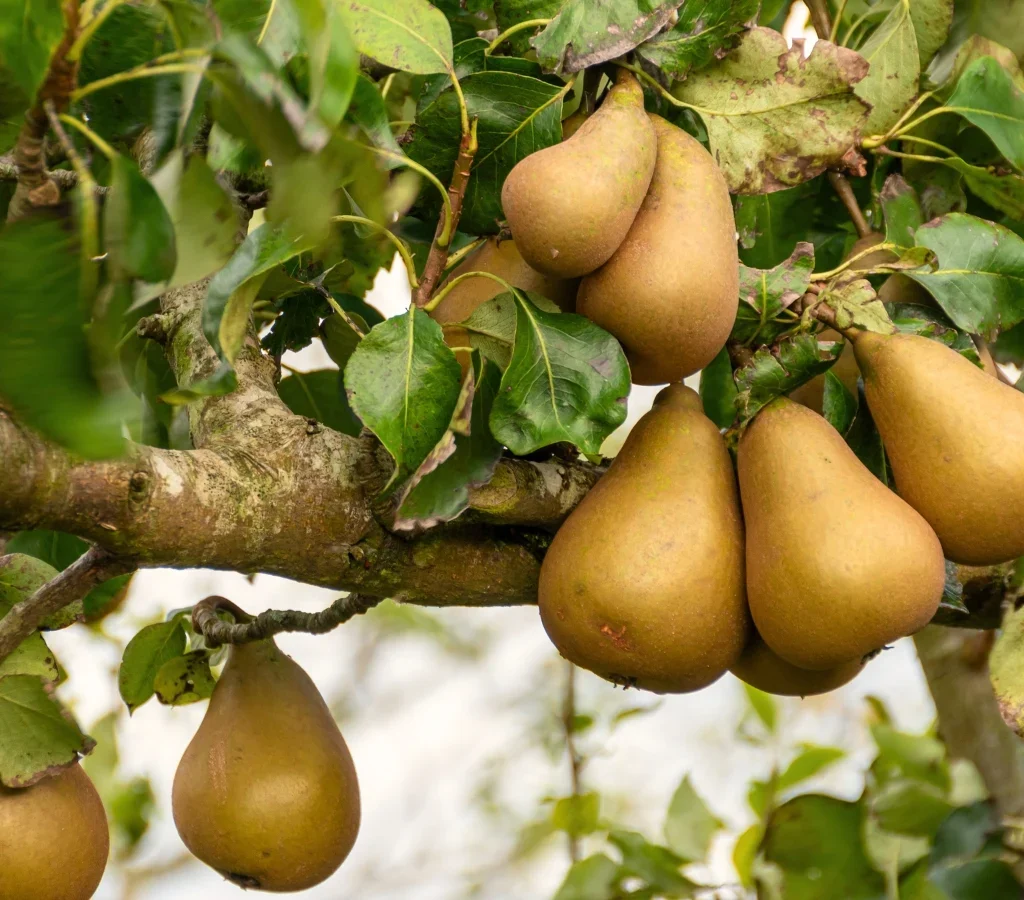
Bosc pear trees bloom in early to mid-spring with clusters of white, fragrant flowers. These blooms are attractive to bees and other pollinators. Since Bosc pears require cross-pollination, make sure a compatible pear tree is flowering at the same time in your garden or nearby orchard.
You can encourage pollination by:
- Planting more than one pear variety
- Avoiding pesticide use during bloom
- Attracting pollinators with flowers like lavender and marigold nearby
Harvesting and Ripening Bosc Pears
Bosc pears are typically ready to harvest in late September to October, depending on your climate. However, pears should be harvested when they’re mature but still firm — they ripen best off the tree.
How to Know When to Harvest:
- The skin color changes from greenish to golden brown.
- The fruit easily separates from the branch when lifted.
- The seeds inside turn dark brown.
After picking, store pears at room temperature for a few days until they soften slightly. To slow down ripening, refrigerate them — they can keep for several weeks.
For best flavor, let them ripen at room temperature and enjoy when the flesh yields slightly to gentle pressure near the stem.
Common Pests and Diseases
While Bosc pears are generally hardy, they can occasionally face a few challenges.
Common Pests:
- Pear psylla
- Codling moths
- Aphids
- Spider mites
Common Diseases:
- Fire blight
- Pear scab
- Powdery mildew
To prevent these, maintain good orchard hygiene — remove fallen leaves and fruits, prune regularly, and use organic pest control methods like neem oil or horticultural soap.
Using and Enjoying Bosc Pears
Once harvested, Bosc pears can be enjoyed in countless ways. Their firm texture makes them excellent for cooking, baking, or simply eating fresh.
Popular Uses:
- Fresh snacking and fruit platters
- Poached in wine or honey syrup
- Baked into tarts, pies, or crisps
- Added to salads with cheese and nuts
- Grilled for a caramelized treat
Their rich, spicy-sweet flavor pairs beautifully with blue cheese, almonds, honey, or chocolate.
Winter Care and Longevity
In colder climates, young Bosc pear trees benefit from winter protection. Apply mulch around the base to insulate the roots and wrap the trunk with burlap to prevent frost damage and sunscald.
With proper care, a Bosc pear tree can live and produce fruit for 40–50 years, rewarding you with annual harvests of delectable pears for decades.
Final Thoughts: Why Every Garden Needs a Bosc Pear Tree
The Bosc pear tree is more than just a fruit tree — it’s a symbol of patience and reward. From the beautiful spring blossoms to the golden-brown fruit of autumn, it adds elegance and productivity to any garden.
Whether you’re a seasoned grower or a beginner looking for a low-maintenance fruit tree, the Bosc pear stands out for its resilience, beauty, and exceptional flavor.
Plant one today, and in a few short years, you’ll be harvesting sweet, aromatic pears that are perfect for both your kitchen and your heart.
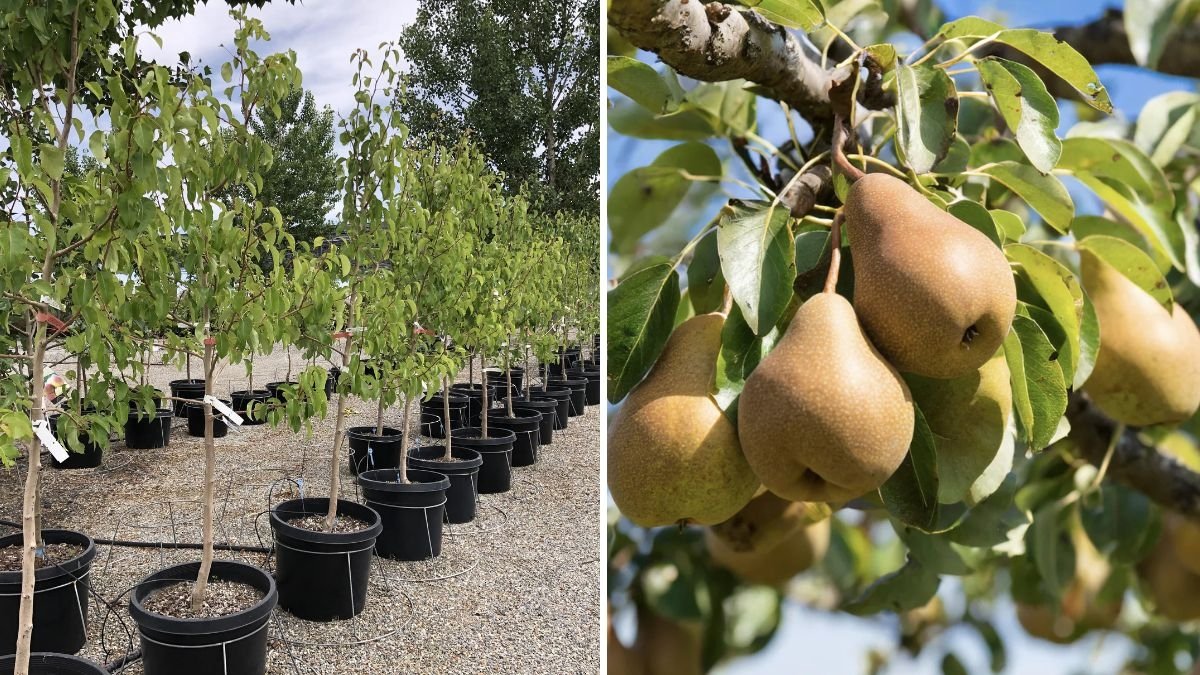


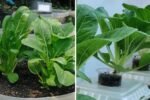
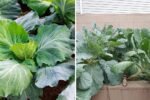
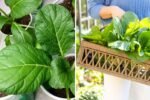
Leave A Comment